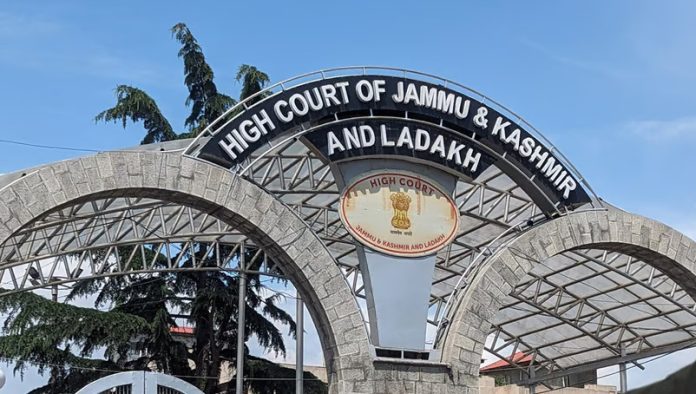S.U. Khan, J.@mdashPetitioner is the wife of respondent No, 4. Respondent No. 3 is the landlord of the accommodation in dispute. Respondent No. 3 filed an application for release of the house in dispute on the ground of bona fide need u/s 21 of U.P. Act No. 13 of 1972 against respondent No. 4. The release application was registered as Rent Case No. 18 of 1988 on the file of the Prescribed Authority/ Additional J.S.C.C., Kanpur Nagar. In the release application it was stated that respondent No. 4 was the tenant of the accommodation in dispute. In the release application respondent No. 4 entered into compromise with landlord respondent No. 3 and admitted the bona. fide need of the landlord. Respondent No. 4 also admitted that he had alternative accommodation, In view of the compromise in between respondents No. 3 and 4, release application was allowed by the Prescribed Authority on 23.9.1988. Thereafter, petitioner, who is wife of respondent No. 4, filed restoration application asserting therein that she was the tenant and further that her husband respondent No. 4 was a drunkard and taking advantage of the said bad habit of her husband, landlord respondent No. 3 got the agreement signed by him. It was further stated that she was not aware of the collusive order dated 23.9.1988. until filing of restoration application which was filed on 24.10.1988. The said application was dismissed in default on 15.12.1989. For recalling the said order petitioner filed another restoration application on 24.1.1990. The said application was rejected by Prescribed Authority on 7.3.90. The revision filed against the said order was dismissed as not maintainable on 14.3.1990, hence this, writ petition.
2. Aggrieved by the orders dated 7,3.1990 and 14.3.1990, the petitioner has approached this Court under Article 226 of the Constitution.
3. So far as the order passed by the revisional court dismissing the revision as not maintainable is concerned, there is no fault therein. The revision was clearly not maintainable.
4. In the order dated 7.3.1990, rejecting the restoration application of the petitioner, firstly it was mentioned by the Prescribed Authority that applicant not being a party to the original rent case and there being no relationship of landlord and tenant in between respondent No. 3 and her, she had no locus standi to challenge the compromise order and applicant''s application was not maintainable on that ground. The Prescribed Authority also held that applicant-petitioner failed to show that she was prevented by sufficient cause from appearing on 15.12.1989. I will take the second point first.
5. In the second restoration application it was stated that on 15.12.1989 son of the petitioner was present in Court and he was told that the case had been adjourned to 16.2.1990. Petitioner in support of second restoration application filed her own affidavit stating therein the said cause of non-representation on 16.12.1989. The Prescribed Authority disbelieved the affidavit on the ground that the assertion that her son was present on 15.12.1989 and he was given to understand that the case had been adjourned to 16.2.1990 was sworn on personal knowledge and the personal knowledge of the said fact could only be with the son of the petitioner. In my opinion, the Prescribed Authority took a very technical view of the matter. In restoration matters technical views are not appreciable. Normally a person who is in possession cannot take the risk of deliberately allowing the restoration application to be dismissed In default. In my opinion, sufficient explanation for non-representation of the petitioner on 15.12.1989, had been given and restoration application deserved to be allowed on that ground.
6. The second and more important point to be decided is as to whether petitioner had any right to file the restoration application. In para 14 of the counter-affidavit of landlord it has been mentioned that petitioner herself on 1.9.1988 executed a notary agreement. Copy of the said agreement has been annexed as Annexure-CA 2. In paragraph 14 of the counter-affidavit it has also been mentioned that the said agreement was filed before respondent No. 2, Prescribed Authority. In para 16 of rejoinder-affidavit of the petitioner the said fact has been denied. In the order of the Prescribed Authority dated 23.9.1988 allowing the release application there is no mention that any agreement executed by petitioner was filed. In the copy of the agreement which is Annexure-CA-2 to the counter-affidavit, it is not mentioned that it is being prepared for filing before the Prescribed Authority. At the top of the agreement neither the name of the Court nor number of the case or name of the parties are mentioned. The agreement has been shown to have been verified by notary. Affidavits filed before Prescribed Authority in proceedings u/s 21 are verified by Oath Commissioner and not by Notaries. If the case of the landlord was that only respondent No. 4 was a tenant, then there was absolutely no necessity to get prepared the said agreement. In view of all these circumstances it is quite clear that neither any such agreement was filed before the Prescribed Authority nor any such agreement was executed by the petitioner.
7. Even if it is assumed for the sake of arguments that respondent No. 4 was the tenant and the petitioner was not the tenant, still petitioner has got right to contest the proceedings as held by the Supreme Court in the Authority in B.P.A. Anand v. S.A. Reddy AIR 20O5 SC 986. In the said authority it has been held that deserted wife of tenant, who was in occupation of leased premises, has right to contest eviction suit filed against her husband. The fact that husband entered into agreement to vacate the premises with the landlord and the wife filed objection to the effect that she intended to continue as occupant of the house In dispute clearly shows that the relationship in between husband and wife was quite strained. It appears that the husband was not at all bothered about his wife and the children. Even otherwise release application on the ground of bona fide need cannot be compromised like an ordinary case. In such matters inspite of compromise, Prescribed Authority is required to record satisfaction about bona Fide need of the landlord. In view of this the benefit available to deserted wife by virtue of the aforesaid Supreme Court authority will also be available to the petitioner, who appears to have extremely strained relationship with her husband even though she may not qualify to be a deserted wife. From the conduct of respondent No. 4 it is quite clear that his wife and children, who were residing in the house in dispute were not his concern and he was least bothered about them.
8. Accordingly it is held that even if respondent No. 4 was tenant, his wife, i.e,, the petitioner has got a right to contest the proceedings when order of eviction has been obtained on the basis of compromise. If the release application had been allowed after contest, then of course wife could not have any right to file restoration application even if she was actually a deserted wife. Accordingly, writ petition is allowed. Orders dated 7.3.1990 and 15.12.1989, are set aside and both the restoration applications of the petitioner are allowed. Consequently order dated 23.9.1988 allowing the release application on the basis of compromise also stands set aside. The Prescribed Authority is directed to decide the release application after providing opportunity to file written statement and adduce evidence to the petitioner.
9. I have held in

